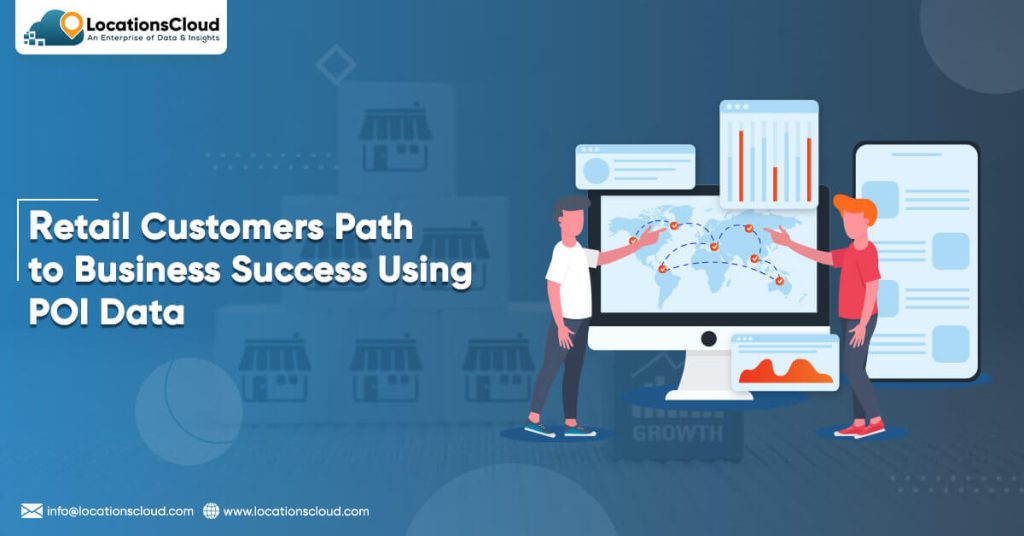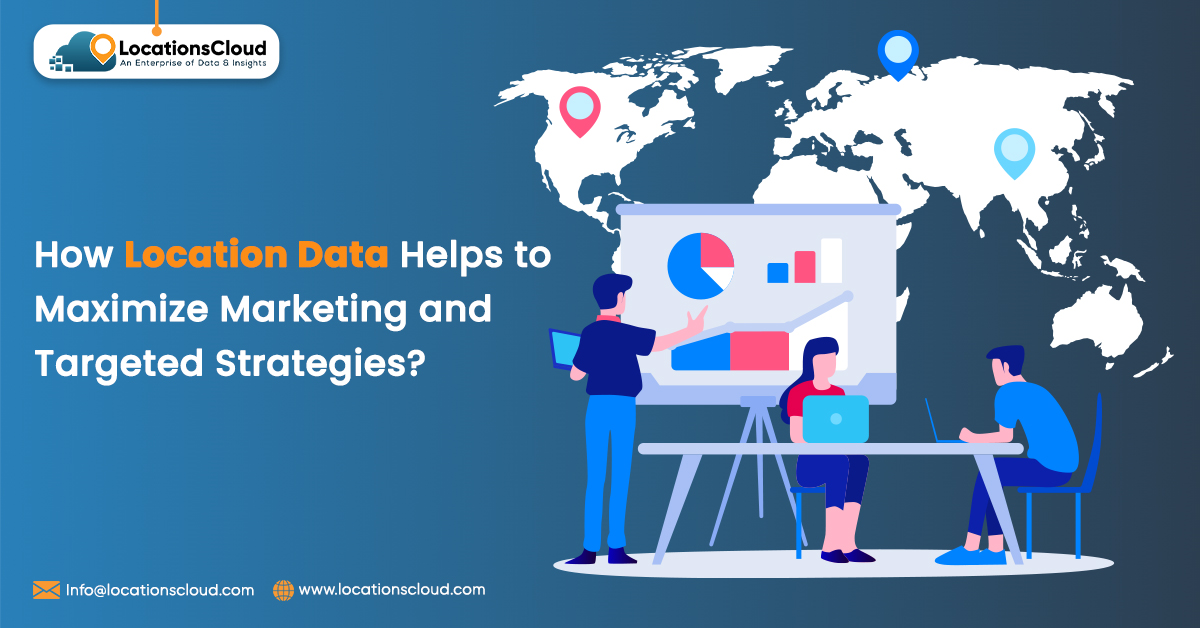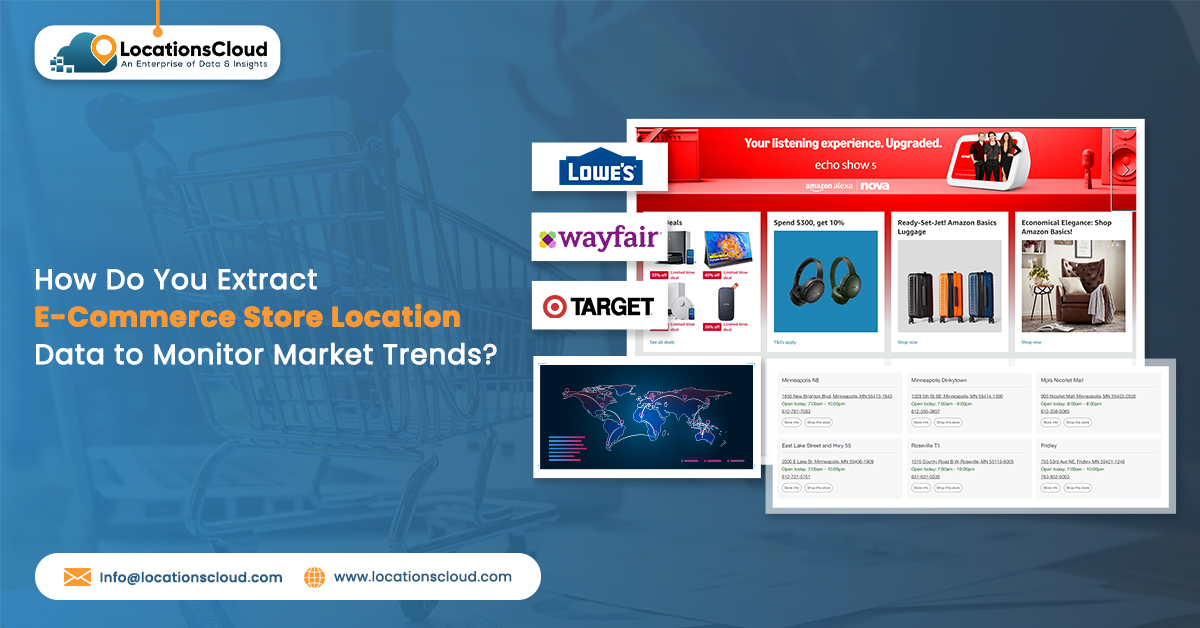
Retailers now rely heavily on point of interest (POI) data. It gives them information about how customers act, and they know who they are and what they buy. POI data also has several benefits for retail customers. It helps them make better choices and have a better time shopping. This blog post will examine how retail customers use POI data and how it might affect the retail sector.
Retail customers use Point of Interest (POI) information to improve their business’s efficiency in several ways. First, companies can use POI research to find Store location data . It could be used to open new shops or outlets in the future. This can be done by looking at the number of customers, competitors, or personal information. Also, they can improve their advertising by focusing on specific customer groups near POIs. For example, they could send special deals or rewards to people who live near the businesses. Also, companies can use POI data to learn more about how customers act. It helps to know how people walk around and where tourists like to go. This will help them make informed decisions about what products to sell. They can know how much they should cost and how to keep track of their stock.
POI Data Defined:
POI data includes features that show store location data on a map and are essential to viewers.
These points of interest could be important buildings, sites, businesses, or places. POI data usually includes the name of the area of interest and its longitudinal and latitudinal coordinates. Besides, it contains the exact address, classification, and contact information.
Moreover, sometimes it has other things like comments, reviews, and hours of operation.
The POI information comes from user-generated content, crowdsourcing, company information providers, and databases owned by the government. Navigation apps, GPS devices, and apps that use location often help people find nearby places, businesses, or activities.
Using POI information, urban planners can organize infrastructure changes. They can figure out where services and facilities should be located. Thus, they can improve the layout of cities.
Transportation providers can use POI data to improve routes and administration. They can enhance delivery choices. Therefore, they can figure out how people move around.
The Ways POI Data Is Generated:
POI info can come from many different places. With so many sources, finding one that gives accurate and full information is important. Some ways to get POI information are as follows:
Governmental records:
Public spaces, historic sites, leisure areas, and other places are recorded by government agencies. These databases can be shared with companies that sell business information or made available to the public.
Business Information Providers:
Businesses that collect and organize POI information from different places are another good source. They use methods like “scraping” websites, “data extraction,” and working with companies to find correct data.
GPS and navigational devices track People’s moves and locations, which can be used to make POI data. Such systems can find popular holiday spots, places people return to often, and user-made markers.
IoT tools and sensors put on different things, like cellphones or cars, can find out about interesting places nearby.
How POI Data is Useful in Business Growth:
POI data is essential for corporate growth because it can give organizations useful knowledge and opportunities. Here are some ways this information can be used:
Industry Assessment:
With POI information, companies can determine how the industry is doing. They can find places where they can grow. Companies can decide whether to expand into new areas and focus on certain areas to get a bigger part of the market.
Venue Choice:
Retail companies might use POI store location data to find the best places for new stores or offices. Companies can choose places where they are more likely to make money and avoid places that don’t look as good.
Consumer Targeting:
With POI data, businesses can learn more about the customers they want. As a result, they can make their ads more relevant to them. By looking at customers’ age, tastes, and habits in certain points of interest (POIs), companies can develop specific advertising campaigns, deals, or rewards to bring in and keep customers.
Comparative Examination:
POI data tells companies how fierce the competition is in their business. Businesses can find gaps, set themselves apart, and make plans to get ahead of the competition. This is possible by looking at the presence and effectiveness of competitors in different markets.
Organizational Performance:
Points of Interest (POI) data can improve performance. They can do so by making it easier to handle supply chains, and they can plan inventories and move goods. By looking at how customers come and go, organizations can improve their processes, use their resources well, and ensure that goods and services are delivered on time.
Where can POI Data Be Obtained?
POI information can be found through several free and paid sites. People often use the following sites to find POI information:
Governmental Resources:
As was said above, the government keeps a good library that can be used to make POI data. These are the best ways to get POI data because they promise the most accurate information.
Business Data Suppliers:
Many companies collect, store, and share POI data. These service providers are also good. However, you need to evaluate them carefully. This will ensure you get good information for your money.
Free Data Platforms:
Many cities, towns, and groups share POI data in their free data campaigns. These systems make information freely available. As a result, it can be used in many different ways. This includes navigation and location-based services
Reviewers and Social Networking Sites:
Information about points of interest (POI) is available as comments. They are available as ratings, images, and other materials. These are made by users on blogs and social networking sites like Yelp, TripAdvisor, etc. These sites can’t give you real POI information. However, they can still help you find information about certain points of interest.
POI data can be reached through APIs and information pools from tracking and location-based service providers like Google Maps API or Mapbox. You can also buy or download various information sets on information platforms, including POI data.
The Ways of Representing POI Data:
Several instruments, networks, and apps use different ways to represent POI data. They do so to store, study, visualize, and send it. The choice of depiction is based on several things. It depends on the specific needs, the reliability of the program or structure, and so on. Depending on the setting and goal, POI data can be shown in several different ways, such as:
Tabular Format:
POI data can be shown like a table or Excel spreadsheet. Each column will represent a different place of interest. Each row will represent things like the name, address, type, location, contact information, and other details. This structure makes the material easy to organize, sort, filter, and analyze.
Geographic Markup Language (GML) is a common XML-based standard for representing location information, especially POI data. GML gives you a standard way to store geographical features, their qualities, and how they are connected. It lets you describe complicated POI data models and can be used to share data between different systems.
Key-Value Pairings:
POI data can also be given in a key-value format. It is where each point of interest is linked to a set of key-value pairs. This compact form is often used to make simple diagrams and share info.
GeoJSON is another popular way to store geographic information. It is possible to show geographical features. This includes lines, dots, polygons, and the qualities that go with them. GeoJSON is often used in programs for mapping and GIS (Geographic Information Systems).
RDF stands for Resource Description Framework. It is a way to organize information and show it graphically.POI data can be shown as a network of connected nodes. This is possible by using RDF properties and types to set up links and features; RDF gives POI data the flexibility and compatibility it needs to be linked to other useful web tools.
Conclusion
POI data has a lot of benefits for store customers. As technology gets better, these systems are getting smarter. This will help to make the user experience better. Users can quickly find all the information they need for various tasks. This will save them a lot of time and effort.




